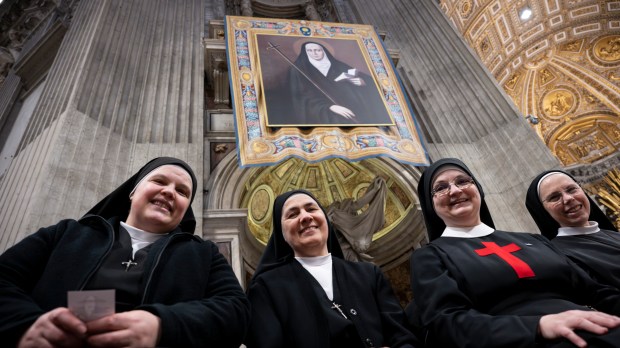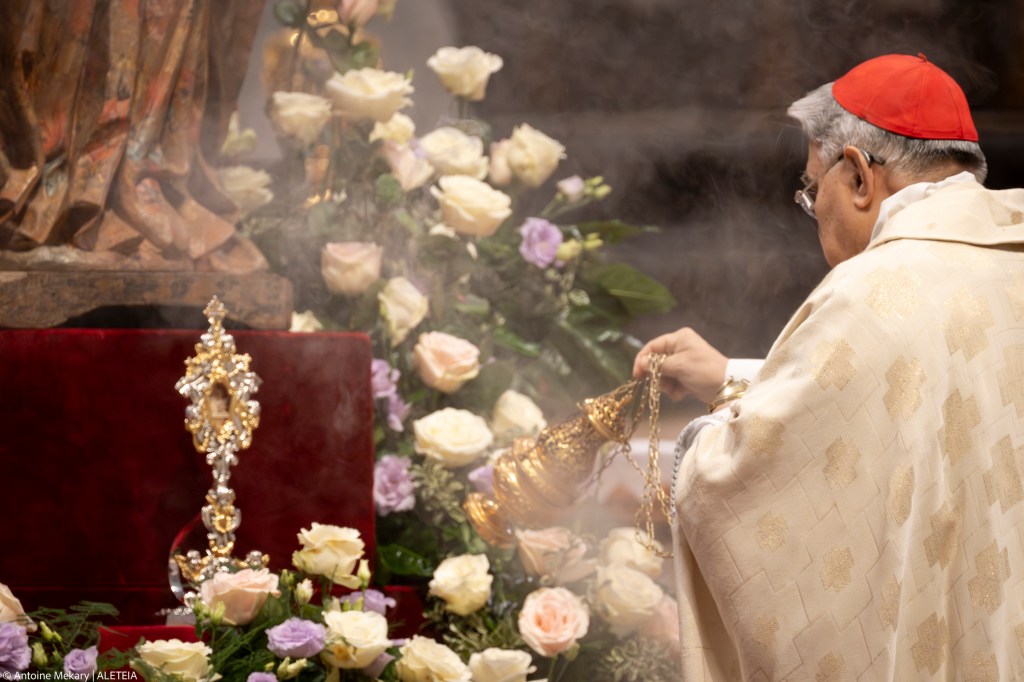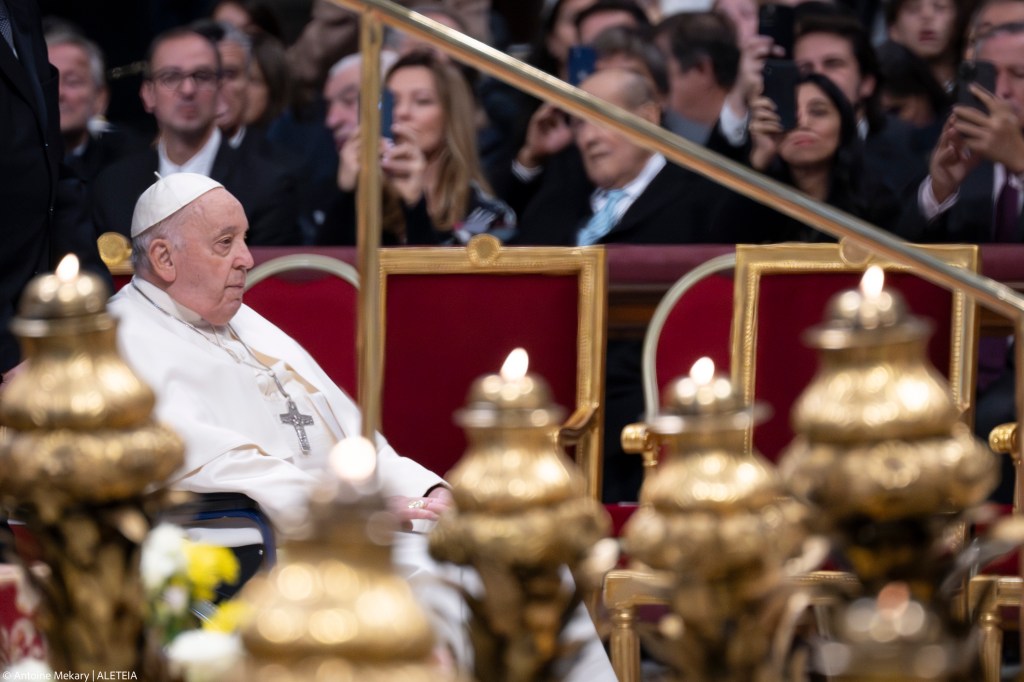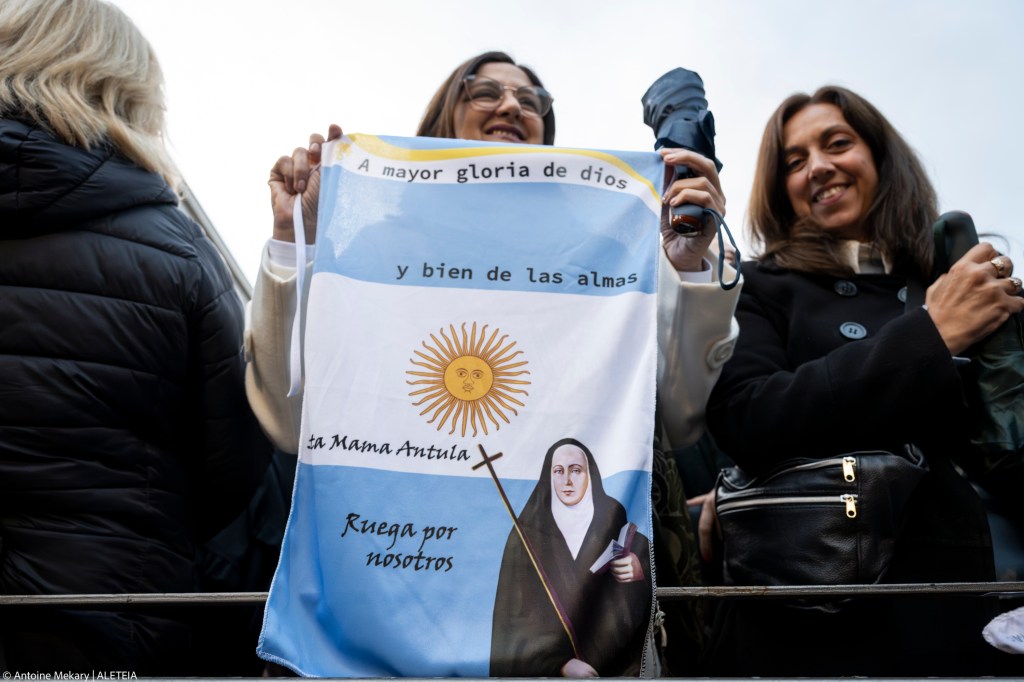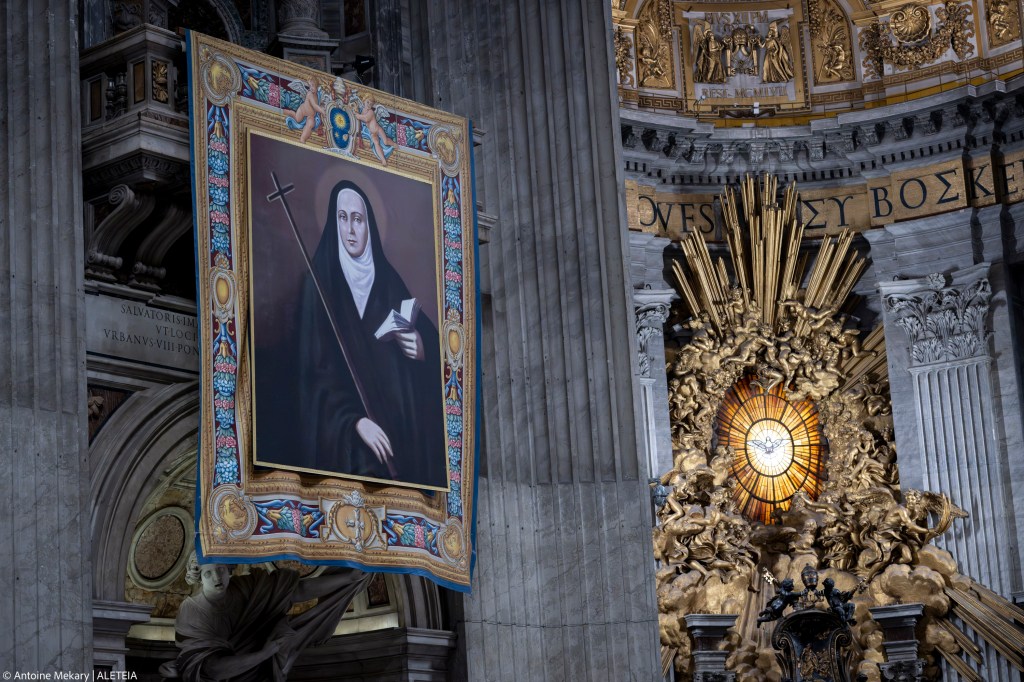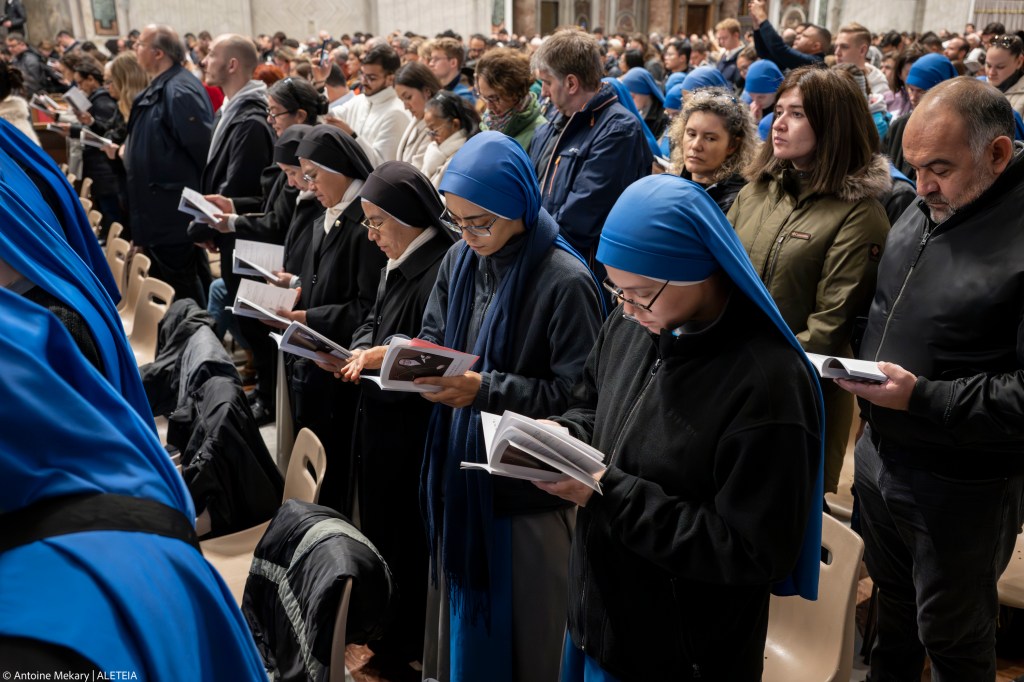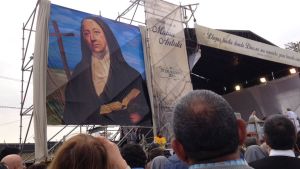On this Sunday, February 11, Pope Francis celebrated Mass in St. Peter’s, canonizing a laywoman from his home county, María Antonia de San José de Paz y Figueroa, known as Mama Antula.
The Holy Father reflected on the healing of the leper, recounted in the Gospel of the day.
~
The first reading (cf. Lev 13:1-2.45-46) and the Gospel (cf. Mk 1:40-45) speak of leprosy: a disease that involves the progressive physical deterioration of the person and which, tragically, even today, in some places causes people to be treated as outcasts. Leprosy and ostracism. These are the ills from which Jesus wanted to liberate the man whom he encounters in the Gospel. Let us take a look at his situation.
That leper was forced to live outside the city. Weakened by his illness, rather than being helped by his fellow citizens, he finds himself forsaken and indeed further wounded by ostracism and rejection. Why? First, because of fear, fear of catching the disease and meeting the same end: “God forbid that it happen also to us! Let us not take a risk, but keep our distance!” Fear. Then, prejudice: “If he has this terrible illness” – for so people thought – “surely it is because God is punishing him for some sin he committed; so he deserves it after all!”
This is prejudice. And finally, because of false religiosity: In those days it was thought that touching a dead person made one ritually impure, and lepers were like the walking dead. It was thought that even slight contact with them made one impure like them. A case of distorted religiosity, one that erects barriers and buries pity.
Fear, prejudice, and false religiosity. These are three causes of a great injustice. Three “leprosies of the soul” that cause the weak to suffer and then be discarded like refuse. Brothers, sisters, let us not think that these are only relics of the past. How many suffering men and women do we meet on the sidewalks of our cities! And how many fears, prejudices and inconsistencies, even among those who are believers and call themselves Christians, continue to wound them all the more! In our time too, there are striking cases of ostracism, barriers needing to be torn down, forms of “leprosy” to be cured. But how? How can we do it? What does Jesus do? He does two things: he touches and he heals.
The first thing: he touches the man. Jesus responds to his cry for help (cf. v. 40); he feels compassion, he halts, he reaches out and touches him (cf. v. 41), knowing full well that in doing so he will in turn become a “pariah”. Oddly enough, the roles are now reversed: once healed, the sick person will be able to go to the priests and be readmitted to the community; Jesus, on the other hand, will no longer be able to enter any town (cf. v. 45). The Lord could have avoided touching that man; it would have been enough to perform a “distance healing.” Yet that is not the way of Christ. His way is that of a love that draws near to those who suffer, enters into contact with them and touches their wounds. The closeness of God; Jesus is close to us, God is close to us. Our God, dear brothers and sisters, did not remain distant in heaven, but in Jesus, he became man in order to touch our poverty. And before the worst case of “leprosy,” which is sin, he did not hesitate to die on the cross, outside the walls of the city, rejected like a sinner, like a leper, in order to touch the depths of our human reality. A saint once wrote: “He became a leper for us.”
Are we, who love and follow Jesus, capable of imitating his “touch”? That is not easy to do, and we must be on guard lest our hearts harbour instincts contrary to his attitude of “drawing near” and “being a gift” to others. As, for example, when we withdraw from others and think only of ourselves; when we reduce the world around us to the limits of our own “comfort zone”; when we believe that the problem is always and only other people… In such cases, we need to be attentive, for the diagnosis is clear: a “leprosy of the soul”: a sickness that blinds us to love and compassion, one that destroys us by the “cankers” of selfishness, prejudice, indifference and intolerance. Let us also be attentive, brothers and sisters, since, as with the first signs of leprosy that appear on the skin, if we do not intervene immediately, the infection will grow and become devastating. In the face of this danger, this possible sickness in our souls, we ask ourselves if there is a cure?
Here we are helped by the second thing that Jesus does: he heals (cf. v. 42). His “touch” is not only a sign of closeness, but also the beginning of the process of healing. Closeness is God’s style: God is always close, compassionate and tender. Closeness, compassion and tenderness. This is God’s style. Are we open to it? Once we let ourselves be touched by Jesus, we start to heal within, in our hearts. If we let ourselves be touched by him in prayer and adoration, if we permit him to act in us through his Word and his sacraments, that contact truly changes us. It heals us of sin, sets us free from our self-absorption, and transforms us beyond anything we could possibly achieve by ourselves and our own efforts. Our wounds – those of the heart and soul –, our sicknesses of the soul, need to be brought to Jesus. Prayer accomplishes this: not prayer as an abstract and repetitive set of formulas, but a heartfelt and living prayer that places at the feet of Christ our miseries, our frailties, our failings and our fears. Let us think about it and ask ourselves: Do I allow Jesus to touch my “leprosies” in order to heal me?
At the “touch” of Jesus, the very best of ourselves is born anew: the tissues of our heart regenerate; the blood of our creative impulses, charged with love, begins once more to flow; the wounds of our past mistakes heal and the skin of our relationships becomes fresh and healthy. The beauty that we possess, the beauty that we are, is restored. Thanks to the love of Christ, we rediscover the joy of giving ourselves to others, without fears and prejudices, leaving behind a dull and disembodied religiosity and experiencing a renewed ability to love others in a generous and disinterested way.
Then, as a magnificent page of the Scriptures tells us (cf. Ez 37:1-14), from what appeared to be a valley of dry bones, living bodies rise up and a community of brothers and sisters is reborn and saved. Yet it would be illusory to think that this miracle takes place in grandiose and spectacular ways. It happens most often in the hidden charity practiced each day in our families, at work, in the parish and at school, on the streets, in our offices and stores. A charity that does not seek publicity and has no need of applause, since love is sufficient unto itself (cf. SAINT AUGUSTINE, Enn. in Ps. 118, 8, 3). Jesus makes this clear today, when he orders the man, now healed, to “say nothing to anyone” (v. 44): closeness and discretion. Brothers and sisters, that is how God loves us, and if we allow ourselves to be touched by him, we too, with the power of his Spirit, will be able to become witnesses of his saving love!
Today, we reflect on the life of María Antonia de San José, “Mama Antula”. She was a “wayfarer” of the Spirit. She travelled thousands of kilometers on foot, crossing deserts and dangerous roads, in order to bring God to others. She is a model of fervour and apostolic courage. When the Jesuits were expelled, the Spirit ignited in her a missionary fire grounded on trust in Providence and perseverance. She invoked the intercession of Saint Joseph and, in order not to tire him too much; she also invoked the intercession of Saint Gaetano Thiene. This is how devotion to the latter was introduced; his image first arrived in Buenos Aires in the eighteenth century. Thanks to Mama Antula, this saint, intercessor of Divine Providence, made his way through houses, neighbourhoods, public transport, stores, factories and hearts in order to offer a dignified life through work, justice and daily bread on the table of the poor. Let us pray that María Antonia, Saint María Antonia de Paz de San José, will help us. May the Lord bless everyone!
